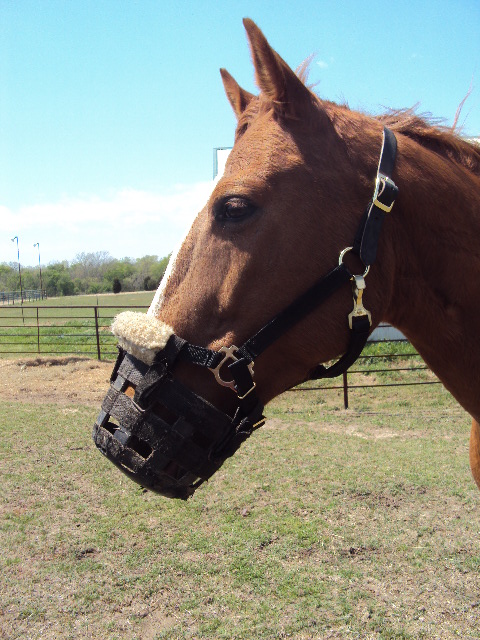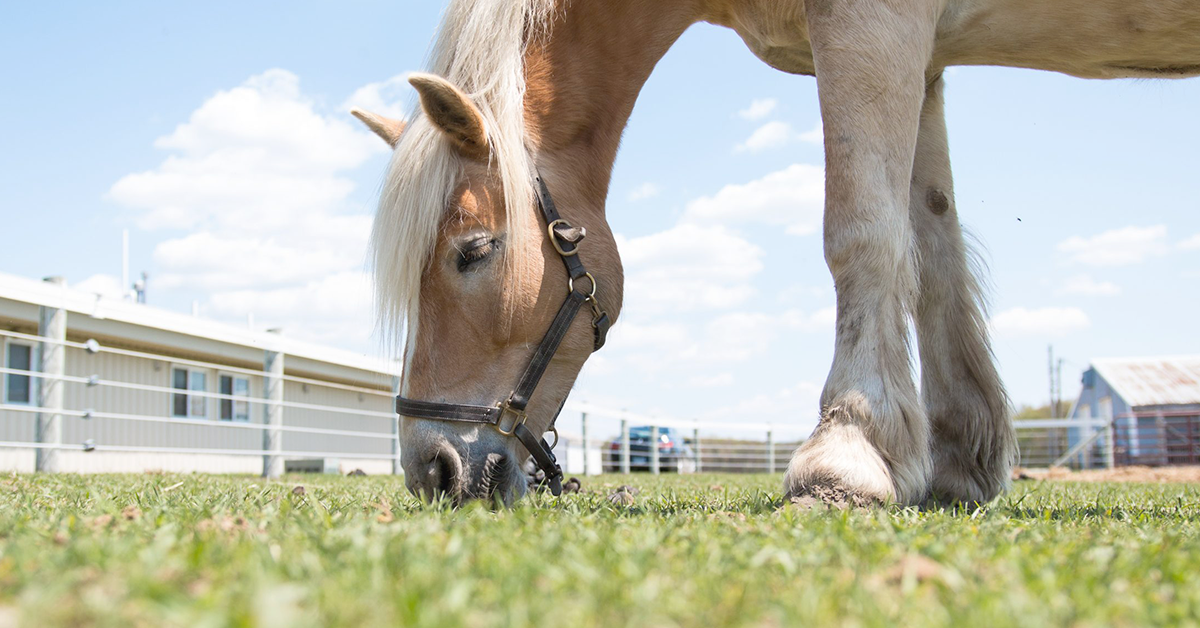Spring is wonderful in almost every way except when it comes to lush spring grass and horses.
Conditions like insulin resistance or equine metabolic syndrome are especially worrisome because these horses simply can’t tolerate the high carbohydrate levels often found in pastures this time of year. Other horses tend to gain weight when turned out full or even part-time. So what’s a horse owner to do?
One possible option is using a grazing muzzle. While these contraptions might look a bit medieval, they’re actually a great way to curb your horse’s grass intake while still providing valuable turnout time that all horses need. Studies have shown that grazing muzzles can cut grass consumption by around 80%.
If you aren’t familiar with them, a grazing muzzle fits over your horse’s mouth and nose, attaching to a halter (many come with breakaway halters). They have a hole at the bottom to allow your horse to eat small amounts of grass and drink, and they also have openings around the sides to allow for airflow.

If your horse has never worn a grazing muzzle before, it will take some getting used to. Start by making sure the muzzle fits correctly and read the directions that come with the muzzle carefully. Your horse should be able to open and close his mouth, and there should be a one-inch gap between his mouth and the bottom of the muzzle. Also, check for areas where the muzzle might rub. Adding a piece of fleece padding on the halter can help prevent rubbing in some instances.
To get your horse accustomed to wearing a grazing muzzle, put it on for small increments of time and gradually work your way up. Keep in mind that muzzles aren’t meant to be worn 24 hours a day; 10-12 hours should be the maximum amount of time your horse wears it.
Another thing to keep in mind is the length of grass in your pasture, as this will affect whether your horse can effectively graze with a muzzle on. If the grass is too short, it won’t fit through the opening of the muzzle, and if it’s too long, it will bend over as he tried to grasp at it. Both of these scenarios will lead to increased frustration for your horse.
With that said, grazing muzzles can be a great tool for overweight horses or those with metabolic conditions, but always monitor your horse carefully when getting him accustomed to the muzzle.
If you’ve ever used a grazing muzzle, feel free to share about your experience in the comments!

Love this blog post? We think you will enjoy Spring Grazing Guidelines by Casie Bazay.



